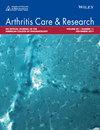Predicting the Impact of Air Quality Index on Rheumatoid Arthritis Disease Activity
Abstract
Objective
This study explored the relationship between air pollution and rheumatoid arthritis (RA), focusing on how specific air quality components affect RA disease activity as measured by the Disease Activity Score in 28 joints (DAS28).
Methods
The research involved data that were obtained from six air-monitoring stations across Kuwait, and information on patients with RA was obtained from the Kuwait Registry for Rheumatic Diseases. This study analyzed the impact of pollutants such as sulfur dioxide, nitrogen dioxide (NO2), ozone (O3), particulate matter with a diameter of 10 micrometers or less, nitrogen oxide, and carbon monoxide on the DAS28.
Results
The results highlighted that NO2 and O3 were the most significant Air Quality Index components influencing DAS28 scores. NO2 had a lag effect of two months (P < 0.01, effect score = 0.43), whereas O3 exhibited a lag effect of three months (P < 0.05, effect score = 0.31), both correlating with increased RA disease activity. The study used a Vector Error Correction Model and cointegration analysis to examine short- and long-term associations between predicted and actual DAS28 scores was adjusted over the following year using air quality index, indicating that strong long-term cointegration with the error correction term was negative and significant (−0.54, P < 0.001).
Conclusion
These findings emphasize the importance of air quality management in mitigating the impact of environmental factors on RA, suggesting that exposure to elevated levels of NO2 and O3 beyond regulatory standards could exacerbate RA symptoms. This study provides a foundation for future public health interventions aimed at improving disease prognosis in patients with RA by addressing environmental factors, such as air pollution.


 求助内容:
求助内容: 应助结果提醒方式:
应助结果提醒方式:


